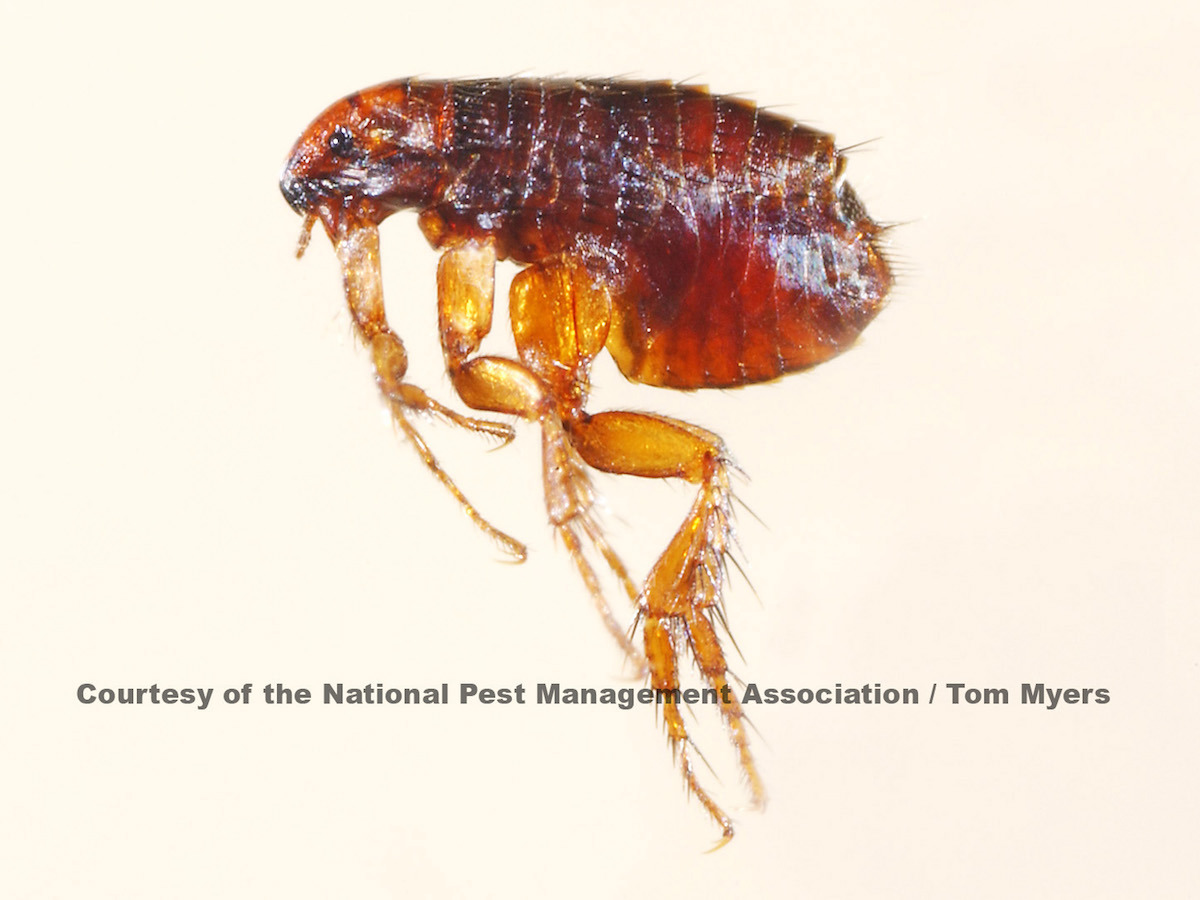Fleas Siphonaptera

Flea Identification
Color: Dark reddish-brown
Size: 1/12 to 1/6-inch long
Legs: 6
Antennae: Yes
Shape: Flat
Region: Found throughout U.S.
What are Fleas?
Fleas are small, flightless parasites that feed on the blood of various warm-blooded animals, depending on the species, and can transmit diseases to their host. Although most people think of fleas as a problem only the family pet has to deal with, they can also bite humans and are the most common transmitter of the rare bubonic plague. While pet owners are primarily at risk for flea infestations, these biting pests can also be brought onto a property via wild animals like raccoons or skunks and then make their way into a home. The most common species is the cat flea, which often feasts on cats, dogs and humans. If you suspect you may have an infestation, we highly recommend hiring a professional for flea extermination.
What do Fleas Look Like?
The size of a flea varies between 1/12’’ to 1/6” in length and they tend to be dark red or brown in color. They are relatively flat in shape and have two antennae and six legs. They do not possess wings, although their strong legs allow them to jump long distances. While they are a small pest, fleas can typically be seen with the naked eye. Adult fleas are equipped with bristles that point backward, which allows them to move swiftly through fur, hair and feathers.
Fleas will bite both people and pests alike. Their bites commonly cause small painful, itchy red bumps with a “halo” around the bite center. Unlike mosquito bites, they remain small and usually appear in groups of three or four, or in a straight line. On humans, bites are commonly found around the ankles or legs, as well as the waist, groin, armpits and in the skin folds of the elbows and knees. Their saliva can also cause serious flea allergy dermatitis in pets and their debris has been reported to cause similar allergic reactions in humans.
Flea bites will usually subside on their own without any treatment. However, in order to stay safe from further biting, an infestation needs to be permanently and professionally dealt with.
Fleas are the most common transmitter of the rare bubonic plague. They also transmit the bacterial disease murine typhus to humans through infected rats. Additionally, fleas can transfer tapeworms and cause anemia in pets, which is why active flea management is an important component of pet care.
Fleas can live for about 100 days during which time the females can produce up to 2,000 offspring. These pests transport themselves on rodents and other mammals, usually remaining on their hosts at all times. Fleas use their powerful legs to jump as high as 8” vertically, which is 150 times their own height.
Like other pests, fleas are able to easily infest households. They’re commonly called “freeloaders” because they transfer to new environments by latching onto mammals, as well as shoes, pant legs and blankets. Once inside, fleas usually hide in areas where pets and people sleep such as furniture, beds and carpeting, as well as the cracks of hardwood floors. Fleas can be found in any part of the United States.
There are many signs of a flea infestation but the most common include scratching, hair loss and red bumps. You may also notice small black specks, which is usually flea feces, scattered throughout pet beds, carpets and rugs. Flea larvae is harder to find and is usually located in more secretive locations like behind furniture or inside the cracks of floors. These eggs are deposited on your pet by the female adult flea, allowing them to fall off of your pet as they move and dispersing them throughout the areas your pet lives in. If you see some of the above signs, you should contact a flea control professional.
Flea control is an ongoing battle. Due to the flea lifecycle, it could take weeks or months to finally end the infestation. If you’re concerned you have a flea issue, it is important to quickly treat any pets who may have become a host. Comb your pets to remove fleas and then bathe them with effective flea treatments. It may be necessary to take your pet to a veterinarian if symptoms persist. To prevent any further infestations, keep dogs on a leash when outside, and be sure to regularly bathe and groom pets.
Prevent household infestations from taking hold by cleaning and vacuuming frequently to help remove flea populations and prevent the laying of eggs. Additionally, be sure to regularly wash bed linens. For serious infestations, you may need to apply heat with a steam cleaner to kill off eggs, or hire a flea exterminator.
Outdoors, make sure the lawn is well-groomed since fleas prefer to hide in tall grass. Since fleas typically travel via rodents, be sure to eliminate any rodent harborage sites on property such as overgrown trees or shrubs. If you suspect a flea infestation, contact a licensed pest control professional to help with proper and effective flea control.



